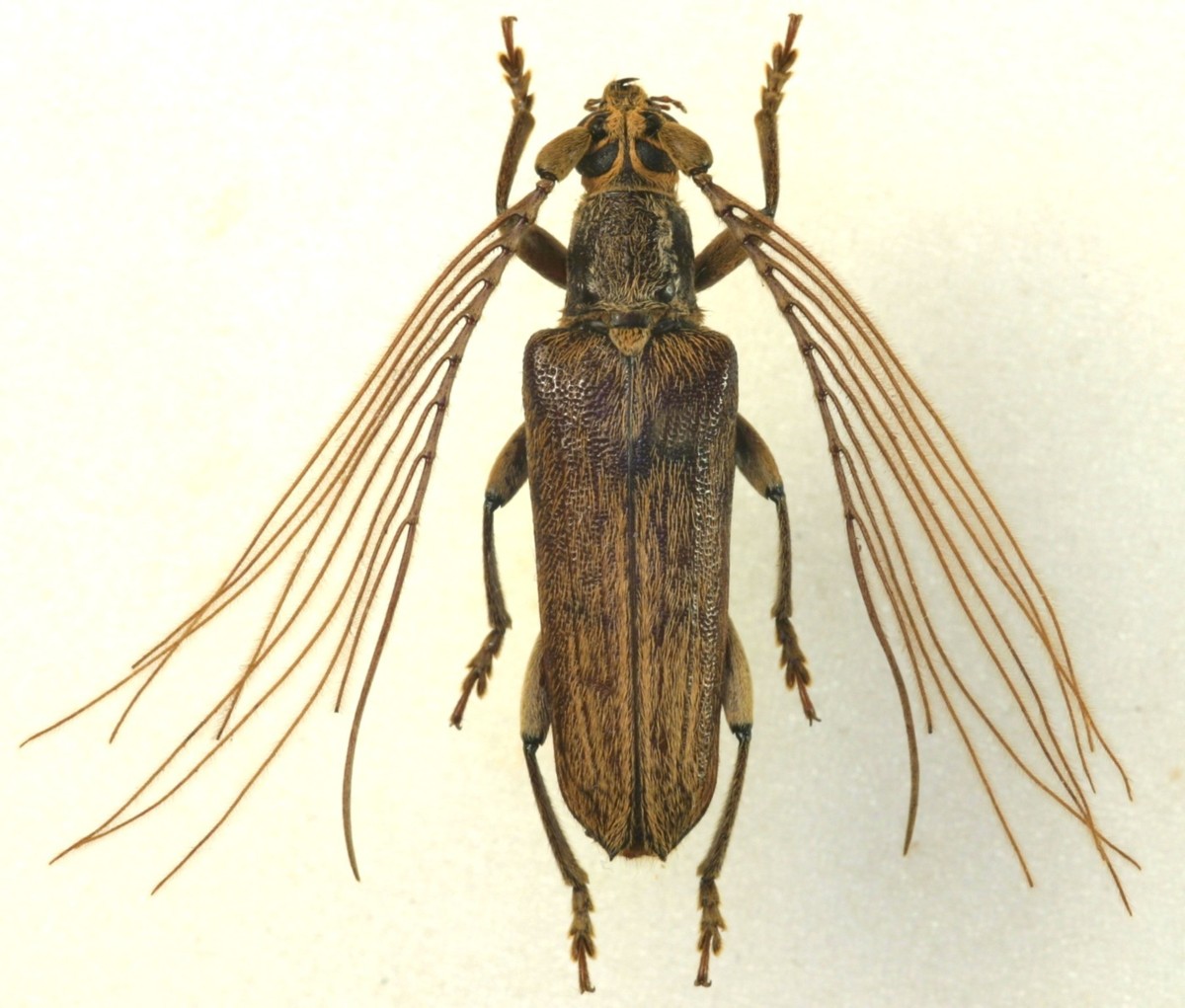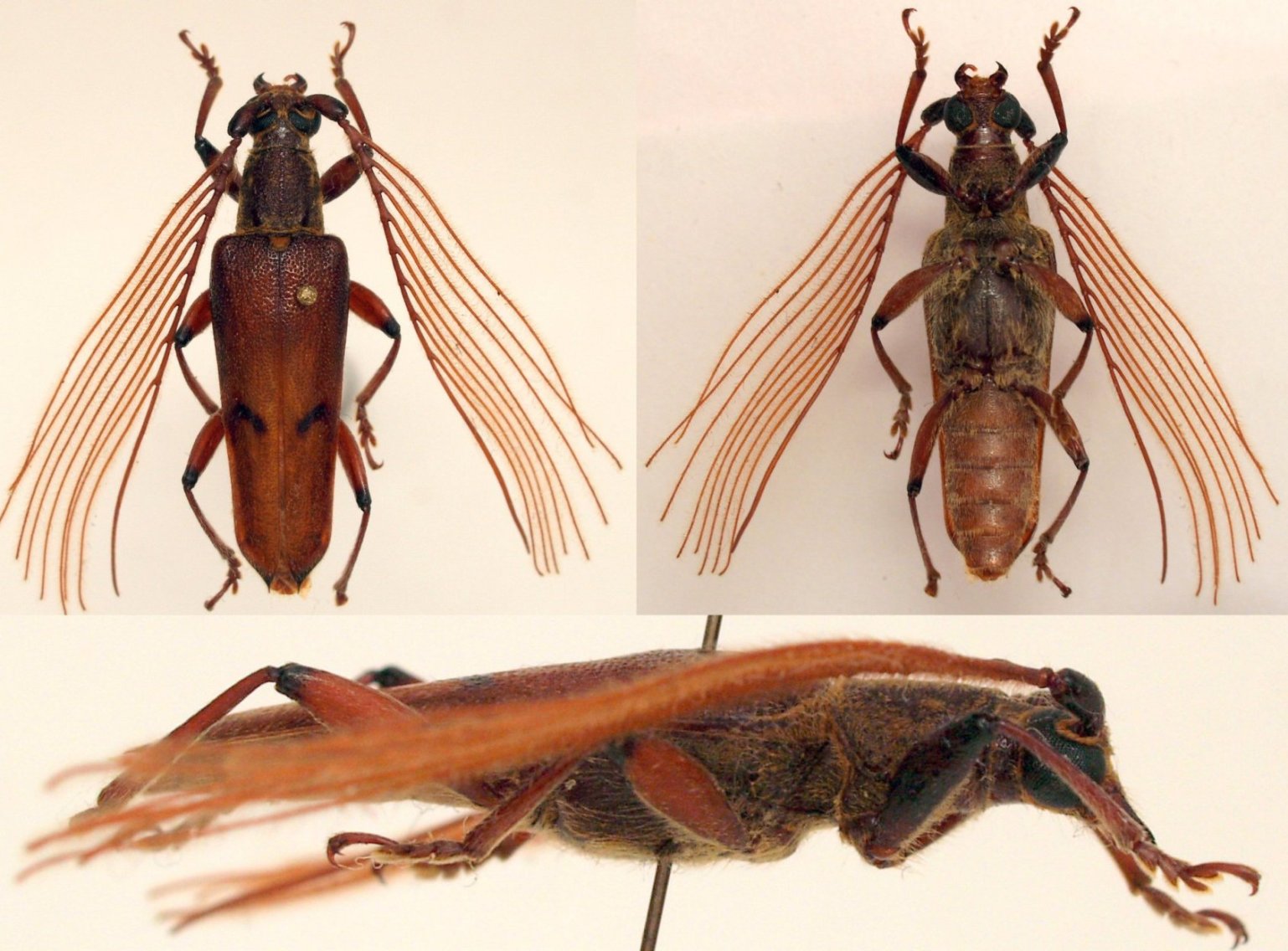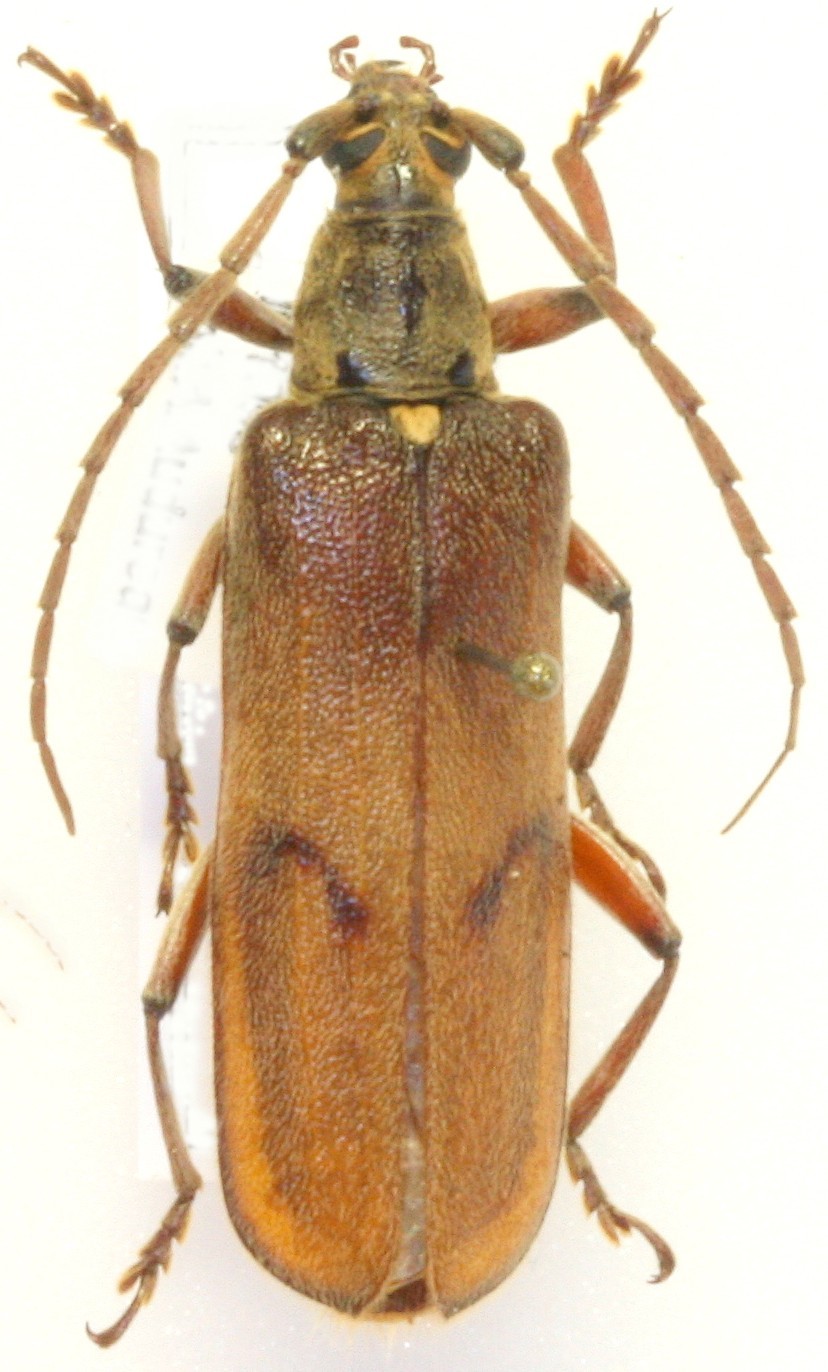| Author |
 Topic Topic  |
|
cerambyphil
Member Rosalia
  
France
675 Posts |
 Posted - 13/03/2013 : 22:39:36 Posted - 13/03/2013 : 22:39:36



|

195.27 KB
Voici un Aprosictus de 27 mm originaire d'Irian Jaya et qui me semble différent de celui visible dans la galerie. |
le confort est fait pour être retrouvé ! |
Edited by - cerambyphil on 13/03/2013 22:42:23 |
|
|
Xaurus
Member Rosenbergia
   
Germany
1907 Posts |
 Posted - 14/03/2013 : 00:07:32 Posted - 14/03/2013 : 00:07:32



|
| I have 1 spm i.m.c. identified as A. bilineatus Ritsema, 1881 from the vic. of Nabire. |
 |
|
|
cerambyphil
Member Rosalia
  
France
675 Posts |
 Posted - 14/03/2013 : 20:26:33 Posted - 14/03/2013 : 20:26:33



|
I don't think this species is bilineatus, because there are some differences with the original description you can see here
For exemple, my Aprosictus does not have a harpon-shaped figure on the elytra and it does not have a bidentate apex of each elytron. |
le confort est fait pour être retrouvé ! |
 |
|
|
Francesco
Forum Admin
    
Luxembourg
9420 Posts |
 Posted - 15/03/2013 : 00:15:52 Posted - 15/03/2013 : 00:15:52




|
Tu as raison Philippe, je ne crois pas qu'il s'agit de bilineatus: la chose qui moins me convint sont les antennes, décrites comme biflabellate, les mêmes de A. truncatus Aurivillius, 1916 (description et figure dans la library).
L'espèce dans la gallery est bilineatus non plus, mais A. duivenbodei (Kaup, 1866).
Au moins qu'il s'agit de A. intricatus Blackburn, 1889 (Australie du Sud), ton spécimen est une espèce encore à décrire. |
 |
|
|
cerambyphil
Member Rosalia
  
France
675 Posts |
 Posted - 15/03/2013 : 07:37:46 Posted - 15/03/2013 : 07:37:46



|
Et bien soit ! Je vais décrire ce spécimen.
Toute documentation relative à ce genre est la bienvenue, ainsi que tout bon conseil !
Merci Francesco.
Après révision du genre, il s'agit d'Aprosictus armellae Jacquot, 2017 Holotype. |
le confort est fait pour être retrouvé ! |
Edited by - cerambyphil on 06/11/2017 19:42:40 |
 |
|
|
Xaurus
Member Rosenbergia
   
Germany
1907 Posts |
 Posted - 16/03/2013 : 00:48:22 Posted - 16/03/2013 : 00:48:22



|
Dear Philippe & Francesco,
I don't know why my spms is id as bilineatus, I haven't seen any type material, and indeed my spms is also different from the pictured one, there is a further gap of knowledge, maybe anybody can help with type pictures (are widespread Stockholm, Leiden, Australia).
|
 |
|
|
Francesco
Forum Admin
    
Luxembourg
9420 Posts |
 Posted - 16/03/2013 : 08:46:51 Posted - 16/03/2013 : 08:46:51




|
In my opinion this (and other) species are not Aprosictus either.
This genus (as stated in the original description) should have biflabellate antennae, as this Aurivillius' species.

Aprosictus truncatus Aurivillius, 1916
By considering the weak characters with which the genera are often defined nowadays, it seems to me that the antennal structure is a more founded diagnostic character... |
 |
|
|
Xaurus
Member Rosenbergia
   
Germany
1907 Posts |
 Posted - 17/03/2013 : 01:32:09 Posted - 17/03/2013 : 01:32:09



|
Aprosictus Pascoe, 1866 has the same antennae structure as shown in the spms from cerambyphil according to the description with the genus type duivenbodei, so also this should belongs to Aprosictus, but sure not to bilineatus (apex different), harpoon-shaped a special opinion of Ritsema, for me nothing 
The biflabellate antennae is a feature more for Piesarthrius Hope.
The related genera Coptopterus Hope and Lygesis Pascoe have different antennae.
Finally it could be a new sp from W-Papua, but I have to see before the type of bilineatus in Leiden. Maybe anybody have the possibility to get a picture from there. |
 |
|
|
cerambyphil
Member Rosalia
  
France
675 Posts |
 Posted - 18/03/2013 : 19:29:17 Posted - 18/03/2013 : 19:29:17



|
I asked the concerned museum to sending me a picture of the 4 typi of Aprosictus.
I will keep you informed with the latest news... |
le confort est fait pour être retrouvé ! |
 |
|
|
cerambyphil
Member Rosalia
  
France
675 Posts |
 Posted - 24/03/2013 : 23:28:58 Posted - 24/03/2013 : 23:28:58



|
I have received the type of Aprosictus intricatus Blackburn, 1889.
As you can see here, antennae are uniflabellate and it got a bispinose elytral apices. |
 |
|
|
Gerard
Scientific Collaborator
    
France
5270 Posts |
 Posted - 25/03/2013 : 17:24:51 Posted - 25/03/2013 : 17:24:51



|

258.52 KB
Bonjour Philippe
voici Aprosictus duivenbodei (Kaup, 1866)
De Sulawesi, Puncak |
 |
|
|
cerambyphil
Member Rosalia
  
France
675 Posts |
 Posted - 25/03/2013 : 20:19:02 Posted - 25/03/2013 : 20:19:02



|
Merci Gérard, cette photo me sera utile pour mon prochain article. Après révision du genre il s'agit d'Aprosictus dilatoscapus Jacquot, 2017 paratype.
Je viens de recevoir Aprosictus truncatus Aurivillius, 1916 qui doit certainement son nom à l'apex de ses élytres inermes !
Le voici en image (type du NHRS). Cet insecte à des antennes biflabellées.
|
Edited by - cerambyphil on 06/11/2017 19:40:43 |
 |
|
|
Gerard
Scientific Collaborator
    
France
5270 Posts |
 Posted - 25/03/2013 : 20:40:34 Posted - 25/03/2013 : 20:40:34



|
Je ne sais pas si c'est une différence sexuelle, mais l'apex des élytres est bien différent pour toutes ces espèces.
Aprosictus truncatus = sans épine
Aprosictus duivenbodei = une épine
Aprosictus intricatus = deux épines
|
 |
|
|
cerambyphil
Member Rosalia
  
France
675 Posts |
 Posted - 26/03/2013 : 00:14:15 Posted - 26/03/2013 : 00:14:15



|

196.61 KB
Non Gérard, ce ne sont pas des différences sexuelles. A l'instar du genre Piesarthrius, les femelles n'ont pas d'antennes flabellées. Tous ces exemplaires d'Aprosictus sont des mâles.
Ce sont des insectes aux moeurs très discrètes et dont la biologie est quasi-inconnue. Ils forment un groupe hétérogène qui, a mon avis, aura besoin d'être éclaté en plusieurs genres lorsque de nouvelles espèces feront leur apparition.
A première vue, mon specimen est morphologiquement proche d'A. duivenbodei. Voici la photo de A. duivenbodei femelle. |
Edited by - cerambyphil on 26/03/2013 13:50:13 |
 |
|
|
cerambyphil
Member Rosalia
  
France
675 Posts |
 Posted - 05/11/2013 : 18:46:56 Posted - 05/11/2013 : 18:46:56



|
Et voici finalement le dernier Aprosictus qui me manquait, enfin... ce qu'il en reste !
Il me provient de la collection Amsterdam à Leyden.
Je vous présente (ici) Aprosictus bilineatus ! |
 |
|
|
Gerard
Scientific Collaborator
    
France
5270 Posts |
 Posted - 05/11/2013 : 19:21:22 Posted - 05/11/2013 : 19:21:22



|
Bonjour Philippe
tu ne trouve pas qu'il ressemble beaucoup au type de Aprosictus intricatus ? |
 |
|
 Topic Topic  |
|


